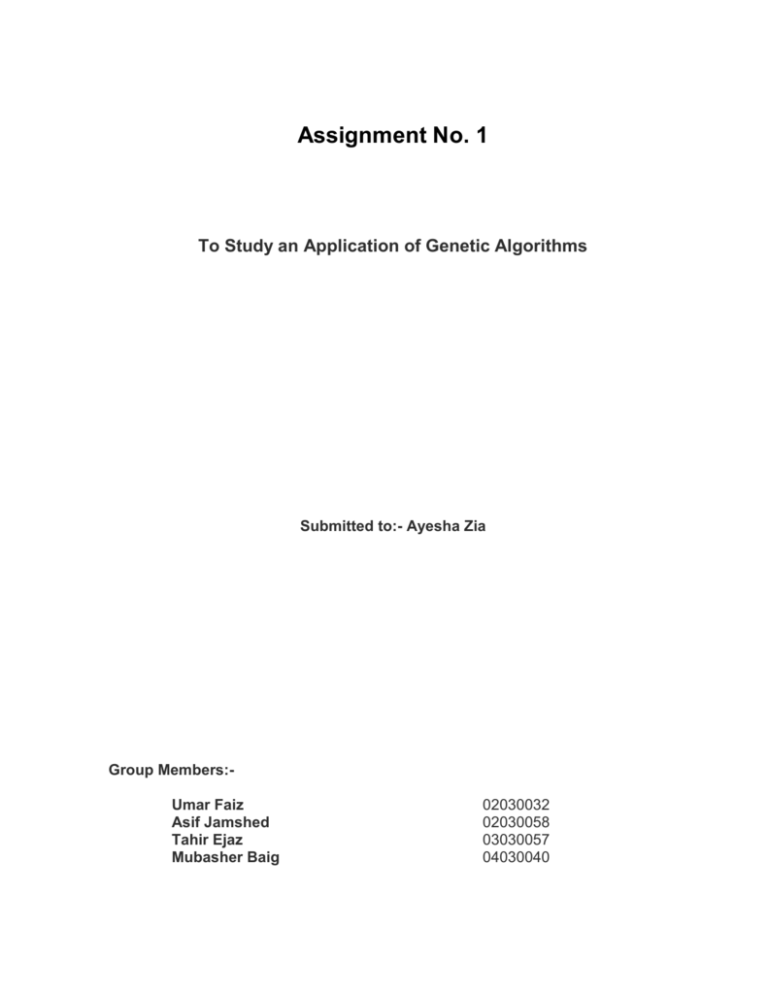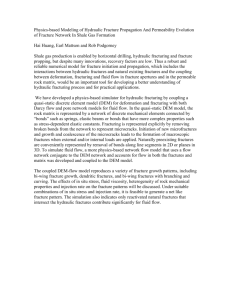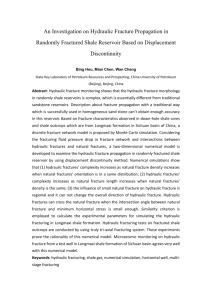MECHANISM OF A GENETIC ALGORITHM
advertisement

Assignment No. 1 To Study an Application of Genetic Algorithms Submitted to:- Ayesha Zia Group Members:Umar Faiz Asif Jamshed Tahir Ejaz Mubasher Baig 02030032 02030058 03030057 04030040 Mechanism of a Genetic Algorithm The process of genetic optimization can be divided into the following steps: 1. Generation of the initial population. 2. Evaluation of the fitness of each individual in the population. 3. Ranking of individuals based on their fitness. 4. Selecting those individuals to produce the next generation based on their fitness. 5. Using genetic operations, such as crossover, inversion and mutation, to generate a new population. 6. Continue the process by going back to step 2 until the problem’s objectives are satisfied. Petroleum and Gas – A Typical Application of Genetic Algorithms Genetic algorithms have found the following applications in petroleum and natural gas industry. Reservoir characterization and modeling Distribution of gas-lift injection Petrophysics and petroleum geology Well test analysis Hydraulic fracturing design Genetic algorithms found their first application for designing optimum hydraulic fractures in a gas storage field.12-13 Problems & Issues Virtual intelligence techniques were utilized to design optimum hydraulic fractures. In order to maintain and/or enhance deliverability of gas storage, an annual restimulation program was used that calls for as many as twenty hydraulic fractures and refractures per year. Lack of engineering data for hydraulic fracture design and evaluation had, therefore, made use of 2D or 3D hydraulic fracture simulators impractical. The prior designs of hydraulic fractures were dependent on engineers’ intuition about the formation and sometimes pure guesswork. The data set used in this study was collected using well files that included the design of the hydraulic fractures. The following parameters were extracted from the well files for each hydraulic fracture treatment: the year the well was drilled, total number of fractures performed on the well, number of years since the last fracture, fracture fluid, amount of fluid, amount of sand used as proppant, sand concentration, acid volume, nitrogen volume, average pumping rate, and the service company performing the job. Use of Genetic Algorithms The first step in this study was to develop a set of neural network models of the hydraulic fracturing process. Using the data mentioned above, these models were capable of predicting post fracture deliverability. Once the neural network model’s accuracy was established, it was used as the fitness function for the genetic algorithm process to form the hybrid intelligent system. The input data to the neural network was divided into three categories: Basic well information Well production history Hydraulic fracture design parameters (sand concentration, rate of injection, sand mesh size, fluid type, etc) Of the above, only the third (hydraulic fracture design parameters) are among the controllable parameters. In other words, these are the parameters that can be modified for each well to achieve a better hydraulic fracture design. A two-stage process was developed to produce the optimum hydraulic fracture design for each well. 1. In the first stage, a neural network for the first stage is designed and trained to perform a rapid screening of the wells. 2. The second stage of the process is the genetic optimization routine. This stage is performed on one well at a time. This second stage process (the genetic optimization routine) starts by generating 100 random solutions. Each solution is defined as a combination of hydraulic fracture design parameters. Genetic operations such as crossover, inversion and mutations are performed, and a new generation of solutions is generated. This process is continued until a convergence criterion is reached. The objective of this stage is to search among all the possible combinations of design parameters and identify the combination of the hydraulic fracture parameters for a specific well that results in the highest incremental post fracture deliverability. This process is repeated for all the wells. The wells with highest potential for post fracture deliverability enhancement are selected as the candidate wells. The combination of the design parameters identified for each well is also provided to the operator to be used as the guideline for achieving the well’s potential. Reference 1. Goldberg, D. E., Computer Aided Gas Pipeline Operation Using Genetic Algorithms and Rule Learning, Ph.D. dissertation, University of Michigan, Ann Arbor, Michigan. 1983. 2. Sen, M.K. et. al., Stochastic Reservoir Modeling Using Simulated Annealing and Genetic Algorithm, SPE 24754, SPE 67th Annual Technical Conference and Exhibition of the Society of Petroleum Engineers held in Washington, DC, October 4-7, 1992. 3. Martinez, E.R. et. al., Application of Genetic Algorithm on the Distribution of GasLift Injection, SPE 26993, SPE 69th Annual Technical Conference and Exhibition held in New Orleans, LA, U.S.A., 25-28 September, 1994. 4. Fang, J.H., et. al. Genetic Algorithm and Its Application to Petrophysics, SPE 26208, UNSOLICITED, 1992. 5. Yin, Hongjun, Zhai, Yunfang, An Optimum Method of Early-Time Well Test Analysis - Genetic Algorithm, SPE 50905, International Oil & Gas Conference and Exhibition in China held in Beijing, China, 2-6 November, 1998 6. 13. Mohaghegh, S., Platon, V., and Ameri, S., Candidate Selection for Stimulation of Gas Storage Wells Using Available Data With Neural Networks and Genetic Algorithms, SPE 51080, SPE Eastern Regional Meeting held in Pittsburgh, PA, 9-11 November, 1988.





